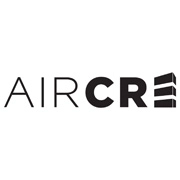A Comprehensive Guide to Temporary Storage Solutions for Tenants

If you’re a tenant, you may find yourself in need of temporary storage solutions at some point. Whether you’re moving to a new place, downsizing your living space, or simply need to declutter your home, renting a storage unit can be a great option. However, with so many different types of storage units available, it can be challenging to know which one is right for you. In this article, we’ll provide a comprehensive guide to temporary storage solutions for tenants.
The Growing Need for Temporary Storage Solutions in Los Angeles
Los Angeles is a bustling city with a growing need for temporary storage solutions. With a population of over 4 million people, it’s no surprise that many residents find themselves in situations where they need extra storage space.
If you’re planning to move to Los Angeles and need a place to store your belongings during the transition or facing storage challenges due to high housing costs, work-related items, or a desire for a minimalist lifestyle, temporary storage is becoming an essential solution in the City of Angels.
Additionally, during significant life transitions like divorce, retirement downsizing, or estate management, temporary storage can help ease the burden.
Assessing Your Storage Needs
Assessing your storage needs is an essential step in choosing the right temporary storage solution. Here are some tips to help you determine how much space you need:
- Take Inventory: Start by creating an inventory of all the items you plan to store. This will help you determine the overall volume of your belongings and give you an idea of the size of the storage unit you need.
- Consider Fragility: Some items may require more space than others due to their fragility. For example, if you plan to store delicate items such as artwork or antiques, you may need a larger storage unit to ensure they are stored safely.
- Think About Accessibility: Consider how often you will need to access your belongings. If you plan to visit your storage unit frequently, you may want to choose a unit with easy access and enough space to move around comfortably.
- Estimate Size: Use a storage unit size guide to estimate the size of the unit you need based on the number of furniture pieces, boxes, and other items you plan to store.
- Seek Professional Advice: If you’re unsure about how much space you need, seek advice from a storage professional. They can help you determine the right size unit based on your specific needs.
When you assess your storage needs first, choosing the right temporary storage solution that fits your budget and ensures your belongings are stored safely becomes easier.
Types of Temporary Storage Solutions
There are several types of temporary storage solutions available in Los Angeles, each with its own unique features and benefits. Here are some of the most popular options:
Box Self Storage
This type of storage is typically found in a self-storage facility and offers a variety of unit sizes to choose from. These units are typically accessed through a central hallway and secured with a lock and key.
Drive-Up Storage
These units are typically located outdoors and allow you to drive your vehicle right up to the unit for easy loading and unloading. This type of storage is ideal for larger items such as furniture and appliances.
Curbside Storage Pods
These storage containers are delivered to your home and loaded at your convenience. Once you’re done, the container is picked up and stored at a secure facility until you’re ready to retrieve your belongings.
Portable Storage Units
Similar to curbside storage pods, portable storage units are delivered to your home and loaded at your convenience. However, these units are typically smaller and can be stored on your property if you have space.
Climate-Controlled Storage Units
These units are typically found in a self-storage facility and are designed to protect stuff from extreme humidity and temperature. They’re ideal for storing delicate items such as artwork, antiques, and electronics.
Vehicle Storage Units
These units are designed to store vehicles such as cars, boats, and RVs. They are typically located outdoors and offer a variety of sizes to choose from.
There are numerous different types of temporary storage solutions available in LA that you can choose from. Knowing the difference helps you choose the one that best fits your needs and budget.
Decluttering and Organizing Tips
Decluttering and organizing your belongings before moving them to a self-storage unit can help you make the most of your storage space and ensure that your items are easily accessible when needed. Here are some tips to help you declutter and organize your belongings:
- Start Small: Star by decluttering one room at a time. This way, you won’t feel overwhelmed and will make the moving process more manageable.
- Sort Items Into Categories: Sort your belongings into categories such as keep, donate, and toss. This process will help you determine which items you want to keep and which ones you can get rid of.
- Use Storage Containers: Use storage containers such as boxes, baskets, and bins to keep your belongings organized and easy to access.
- Label Everything: Labeling your storage containers can help you quickly find what you need when looking for it.
- Maximize Your Space: Make the most of your storage space by using vertical space and investing in shelving units.
Decluttering and Organizing Tips
Efficiently packing and organizing a self-storage unit is essential. Here are some valuable tips to assist you in effectively packing and storing your belongings:
- Choose Durable Storage Containers: Opt for sturdy storage solutions such as boxes, trunks, or plastic storage bins. These containers not only provide durability but also stack neatly, which optimizes storage space.
- Maximize Box Capacity: Ensure that you fill each box to its capacity. This prevents items from shifting during transportation or when you need to lift them.
- Label Everything Clearly: Labeling your storage containers is a simple yet highly effective practice. It allows for quick identification.
- Prioritize Accessibility: Strategically determine which items you’ll require access to in the near future. Place these items towards the front of your storage unit where you can easily reach them.
- Create a Clear Path: Dedicate a clear pathway down the middle of your self-storage unit to provide easy access to all your stored items.
Cost Considerations for Temporary Storage
When considering temporary storage solutions, cost is an important factor to consider. Here are some cost considerations to keep in mind:
- Unit Size: The size of the storage unit you choose will impact the cost. Larger units will generally cost more than smaller units.
- Commitment: Many self-storage facilities offer discounts if you’re willing to commit to a longer rental period.
- Type of Storage: The type of storage you choose will also impact the cost. For example, climate-controlled storage units will generally cost more than standard units.
- Location: Storage unit prices can vary based on where you live. It’s important to research prices in your area to ensure you’re getting a fair price.
- Fees and Promotions: Be sure to account for any fees or promotions when calculating the cost of your storage unit
Tips for a Smooth Move-In and Move-Out
Here are some tips to help you have a smooth move-in and move-out:
- Plan Ahead: Create a to-do list and timeline to help you stay organized and avoid last-minute stress.
- Give Yourself Plenty of Time: Allow yourself enough time to pack and move your belongings. Rushing can lead to mistakes and damage to your item.
- Use Vacuum-sealed Bags: Vacuum-sealed bags can help you save space by compressing bulky items such as bedding and clothing.
- Disassemble Furniture: Disassembling furniture such as bed frames and tables can help you save space and make moving items in and out of your storage unit easier.
- Use Pallets: Using pallets to elevate your items off the ground can help protect them from moisture and pests.
- Protect Fragile Items: Use bubble wrap, packing paper, or blankets to protect fragile items such as glassware and electronics.
- Create an Inventory: Creating an inventory of the items you’re storing can help you keep track of what’s in your storage unit and make it easier to find what you need when you’re looking for it.
Self Storage In LA: A Guide
Whether you’re downsizing, relocating, or simply need extra space, following these tips will ensure a smooth and hassle-free experience in this bustling city.








